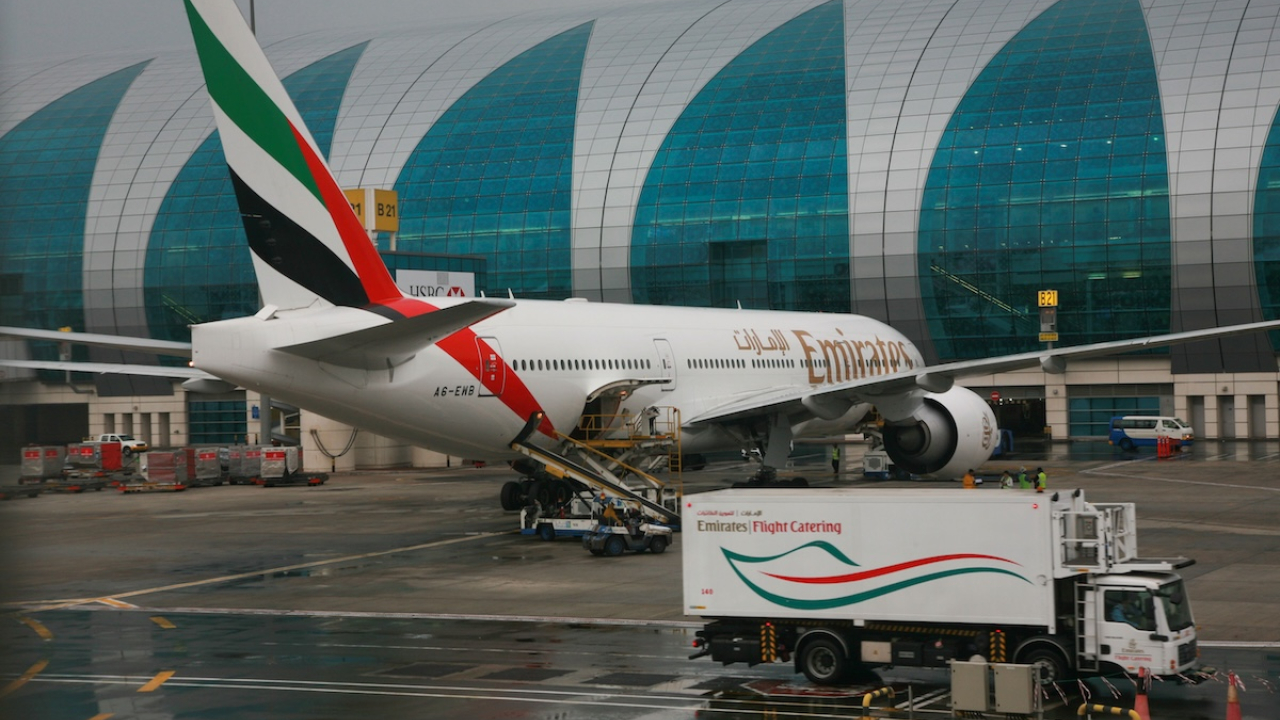Lessors to play major role as CSeries looks to Middle East

Bombardier hopes to sell around 1,600 CSeries aircraft to leasing companies over the next 20 years – 50 per cent of the number it predicts it could sell in total. This represents half the total aircraft market in the 100-149 seat sector in the period – a total that the Canadian manufacturer believes will amount to around 6,300 aircraft.
The company added momentum to its marketing drive to the financial community by holding briefings during Euromoney’s 20th Annual Airfinance Conference in
Bombardier Commercial Aircraft’s delegation was led by Gary Scott, president commercial aircraft, and included three vice presidents – Rod Williams (commercial operations), Pierre Poutissou, (marketing) and Ben Boehm (programs). In 2004 Boehm was Scott’s first team member when the former Boeing executive started the project that led to the CSeries launch in July 2008.
Scott said the options for financing aircraft were: via the banks; lessors doing operating leases or ‘sale and leasebacks’; government Export Credit Agency (ECA) guaranteed financing; and via the manufacturer. “We don’t do financing,” said Scott, while adding that ECA financing couldn’t be secured earlier than 18 months before planned delivery of aircraft.
The CSeries entry-into-service is planned for “late 2013”, said Scott, who couldn’t be more specific about timing. He did say, though, that the company planned to ramp up the production rate to 20 a month within three years of the first aircraft going to customers.
Bombardier is targeting the lessors partly because “they have better credit ratings than most airlines”, admitted Scott. However, he recognised that GE Commercial Aviation Services (GECAS), which had previously taken a keen interest in CRJ aircraft sales as they use GE CF34 engines, was less likely to acquire CSeries aircraft, which will have new Pratt & Whitney-geared turbofan engines.
He pointed out that “one of our first customers is a lessor – LCI”. The only other customer for the CSeries to date is Lufthansa – it has ordered 30 with 30 options, while LCI has ordered 20 with 20 options (an option being a right to order further aircraft on the same terms as the first order).
Another reason Bombardier expects significant lessor interest in the CSeries is that it is basically the model that’s in the industry today. “Even the regional aircraft market is migrating that way. It’s really the best formula for airlines,” said Scott.
Boehm told Arabian Aerospace that the
In terms of lessors, Bombardier expects keen interest from the likes of Hong Kong International Group, which purchased AllCo Aviation last year, CIT and BCI Aircraft Leasing. It will also be wooing Middle East investors and banks – one of the main lessors in the
Nevertheless Scott recognises that airlines are still struggling. “They have done a good job managing their capacity,” he said. “We expect more orders this coming year but how many depends on how quickly the recovery goes. We’ll be in the best position as we have the only new technology airplane in our market.”
Scott predicted that order levels in 2010 would “roughly reflect the order levels in 2002”, the year after the 9/11 attacks, and also said that when Boeing launched the 787 in 2004 it was “the only new technology aircraft – and when the market came back, the orders took off”. He expects the CSeries to do the same.
He recognised, however, that because this downturn had been caused by a financial crisis rather than terrorist attacks, recovery could be slower – but also pointed out that the CSeries is still four years from first delivery, whereas in 2004 the 787 was only four years from planned first delivery at launch.
Bombardier has made no secret that it is taking a cautious approach compared with Boeing, which has experienced significant delays with the 787. Said Boehm: “The biggest lesson we have learned from the 787 is having integrated test rigs and all the suppliers using the same software, for scheduling etc. They are all linked into the same web system.” Boehm also said that the CSeries had been allowed a longer development process, something that is “fundamental to our ability to deliver on time”.
Scott added: “Boeing’s challenges were already reflected in our plans and we’ve done some more tweaking.”
Boehm said a design freeze would occur during 2010, when the manufacturer was ready to start the detailed design phase. “At that point all systems will have been integrated and all performance of the systems and the airplane will be locked down. After that there will be a formal change management process in place.” He added that the design freeze could only occur after a whole-aircraft level “close out” involving all teams and suppliers and even customers, including some that are still in negotiations over orders.
Aircraft number one
One of the key elements of development is the Complete Integrated Aircraft System Test Area (CIASTA). At the end of the detailed design phase, everything will be tested in ‘Airplane Number One’, which is not a complete aircraft but has all the systems connected, even if in different rooms for safety reasons. The pilots will even be able to ‘fly’ this aircraft, said Boehm, including cycling the undercarriage, for example.
Scott called it the ‘Iron Bird Plus’ because it is so much more than previous ‘iron bird’ rigs used by Airbus and Boeing in the development of, for example, the A380 and 787. He admitted, however, that it was the first time Bombardier had created such a test area to help develop a new aircraft.
“CIASTA will basically go on for ever, for ongoing studies and development – but its main purpose will be completed before first flight.”
Production logistics are also in the planning stage. Boehm said, on current plans, the three sections of the fuselage would be shipped by sea from
Meanwhile, the wings will be shipped from
A seven-metre long test barrel (with a 3.7m diameter) was shipped in August to
Fleet renewal
Many of the orders expected by Bombardier over the next 20 years will be to replace ageing aircraft such as DC9s, Fokker 100s and BAe 146s. “There’s a real need to replace those older airplanes – there’s a pent-up demand,” said Scott. “Some of those old dogs are running out of runway technically – and certainly economically too. They’ve kept going as there has been nothing to replace them.”
Poutissou said Bombardier’s forecast predicted that 52 per cent of the market would be for replacements, “and we want at least half of that market”.
On top of the replacements will be aircraft that will represent the tools of growth. Bombardier believes that it has a good window of opportunity – even if Boeing and Airbus re-engine the 737 and A320 product families respectively. “They still won’t change their relative position in the marketplace because they are not optimal for the 100-150 seat market and serve that market with downsized versions,” said Scott.
He estimated that the CSeries would have direct operating costs around 20 per cent lower than the current mainstream narrowbodies (taking the CS300 versus the A319 as an example), and as half of the advantage would come from the engine and half from the airframe, Airbus and Boeing would, at most, cut the advantage to 10 per cent.
Poutissou showed a demonstration which illustrated that, by the time Airbus and Boeing produced all-new narrowbody designs, there would be little, if any, advantage over the CSeries in its market (depending on various assumptions such as fuel cost) – partly because the cost of delaying the replacement of inefficient older aircraft is factored in.
Nevertheless, Scott acknowledged that many airlines are probably waiting to see what Boeing and Airbus decide to do. “Their choice is to go with the new Bombardier, re-engined Airbus or Boeings, or do nothing and wait for a new aircraft from Airbus or Boeing. It is creating a lot of debate among airlines – but we’re very happy with our timing,” said Scott.
Stay up to date
Subscribe to the free Times Aerospace newsletter and receive the latest content every week. We'll never share your email address.

